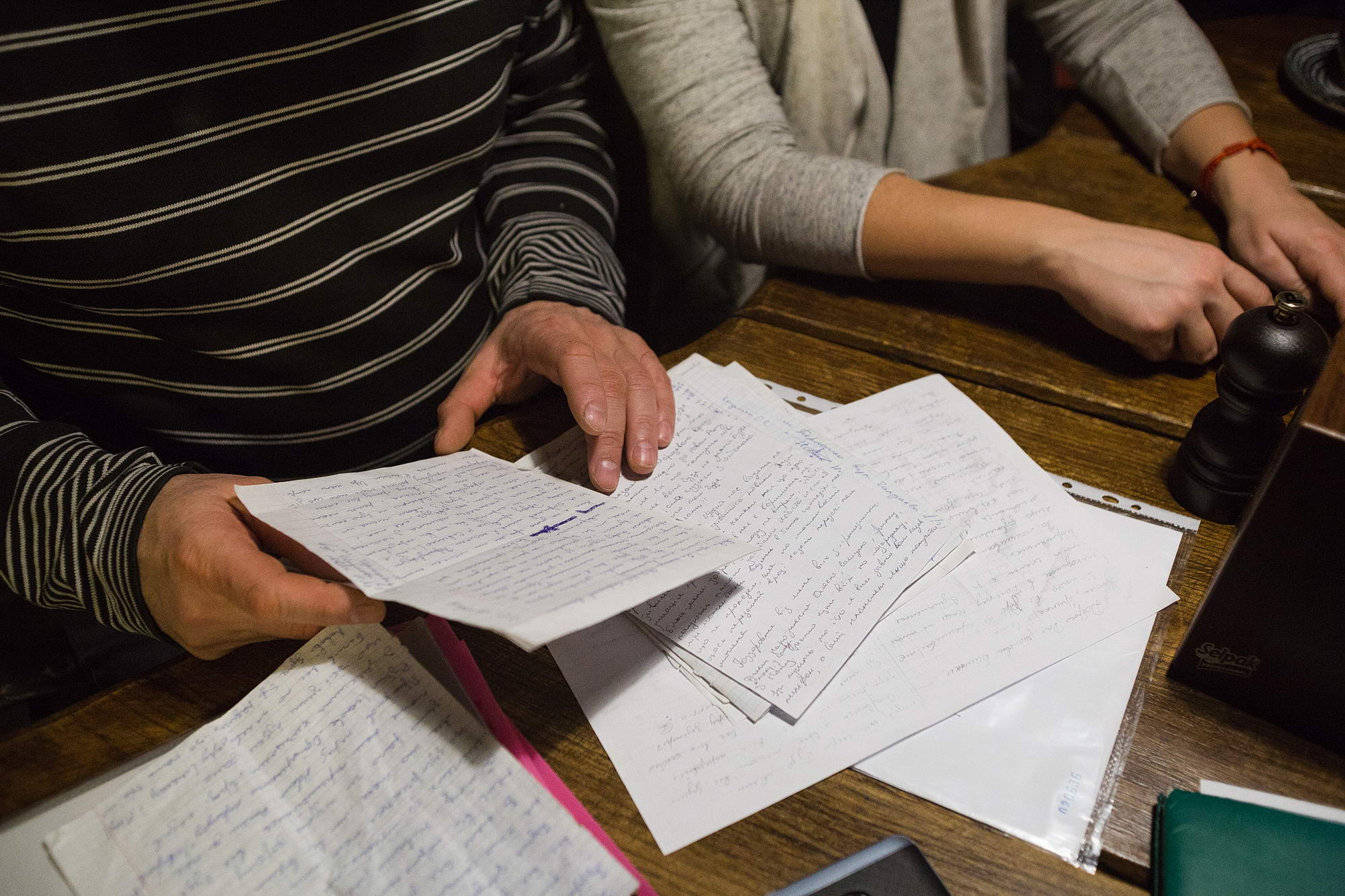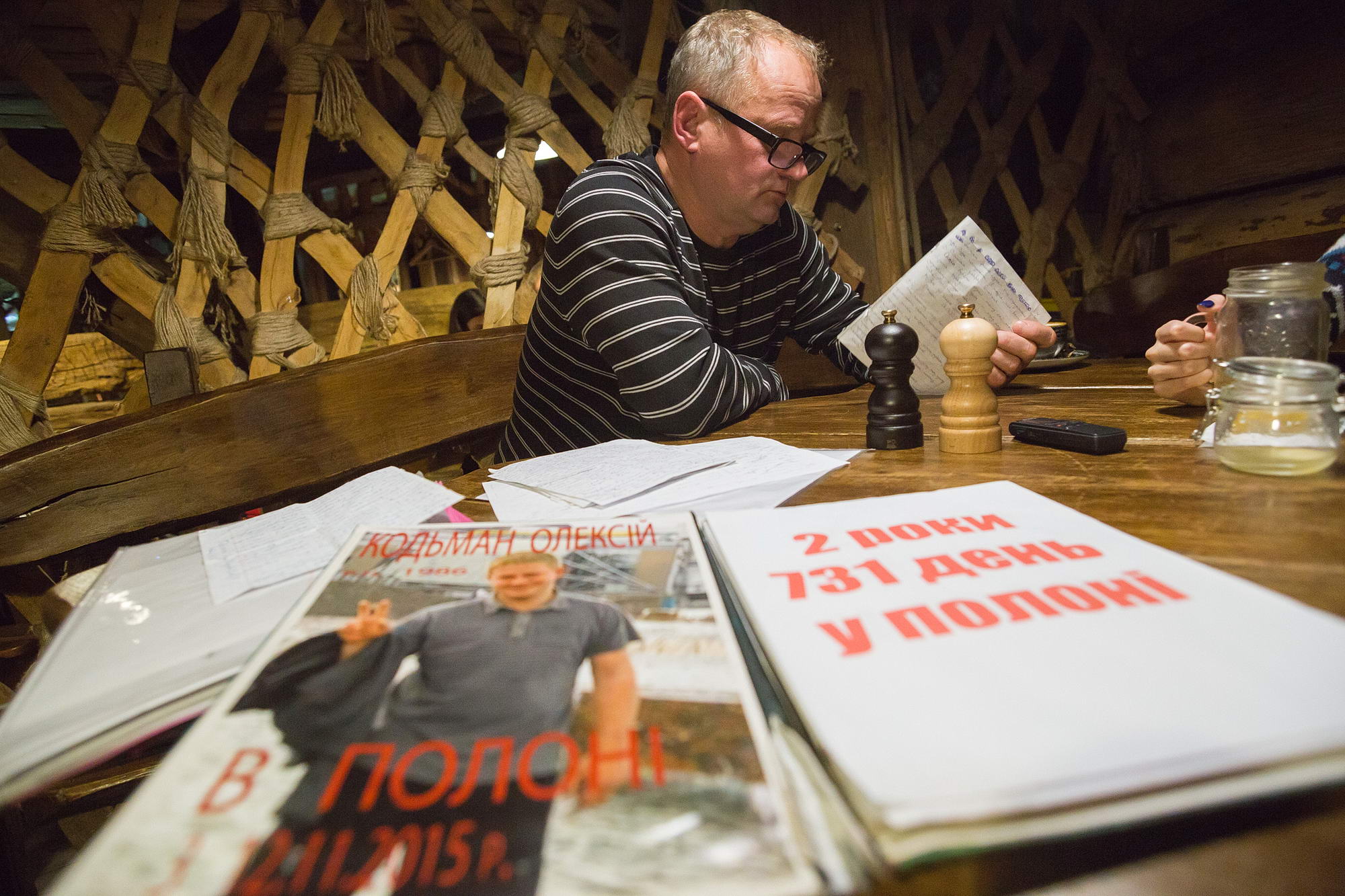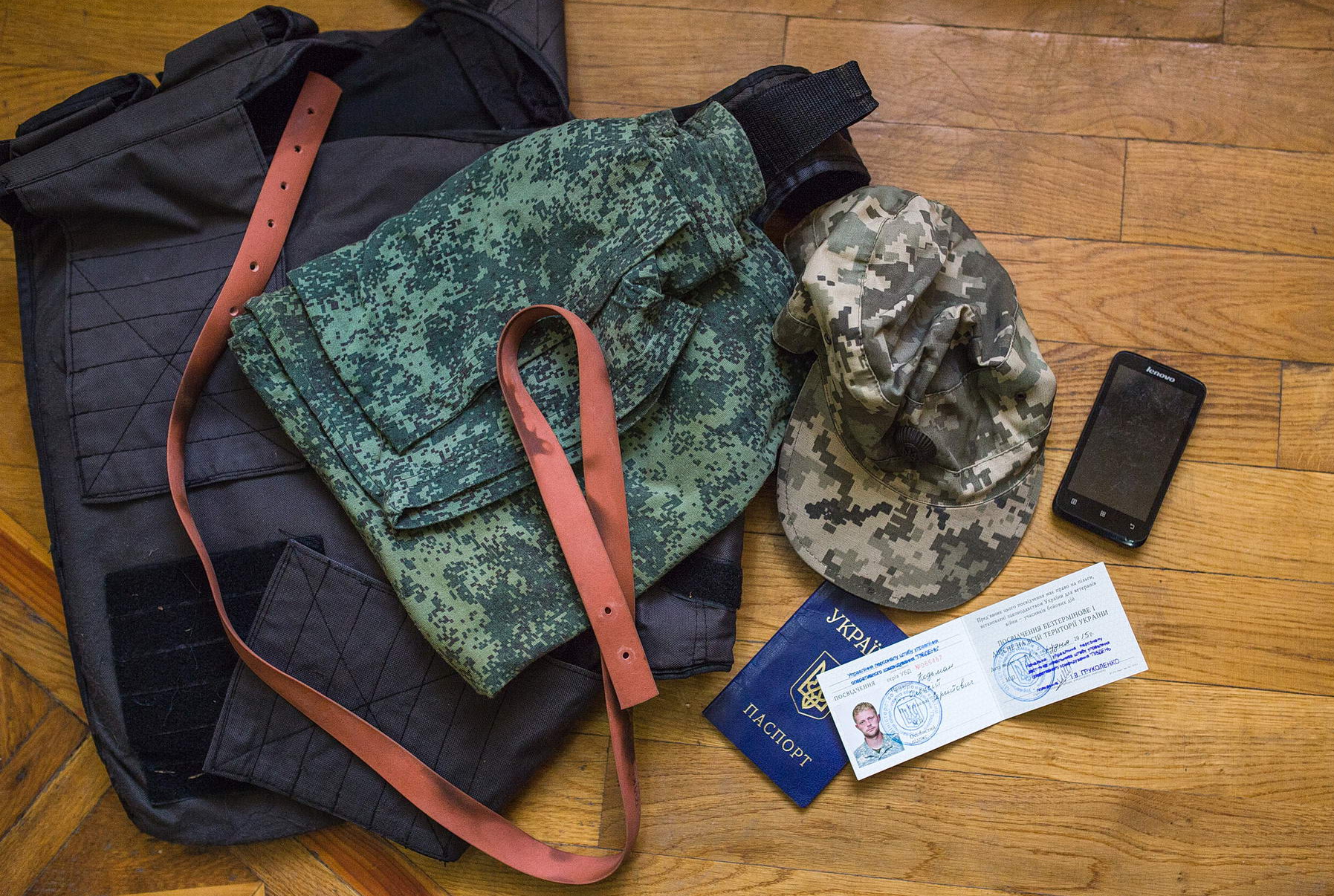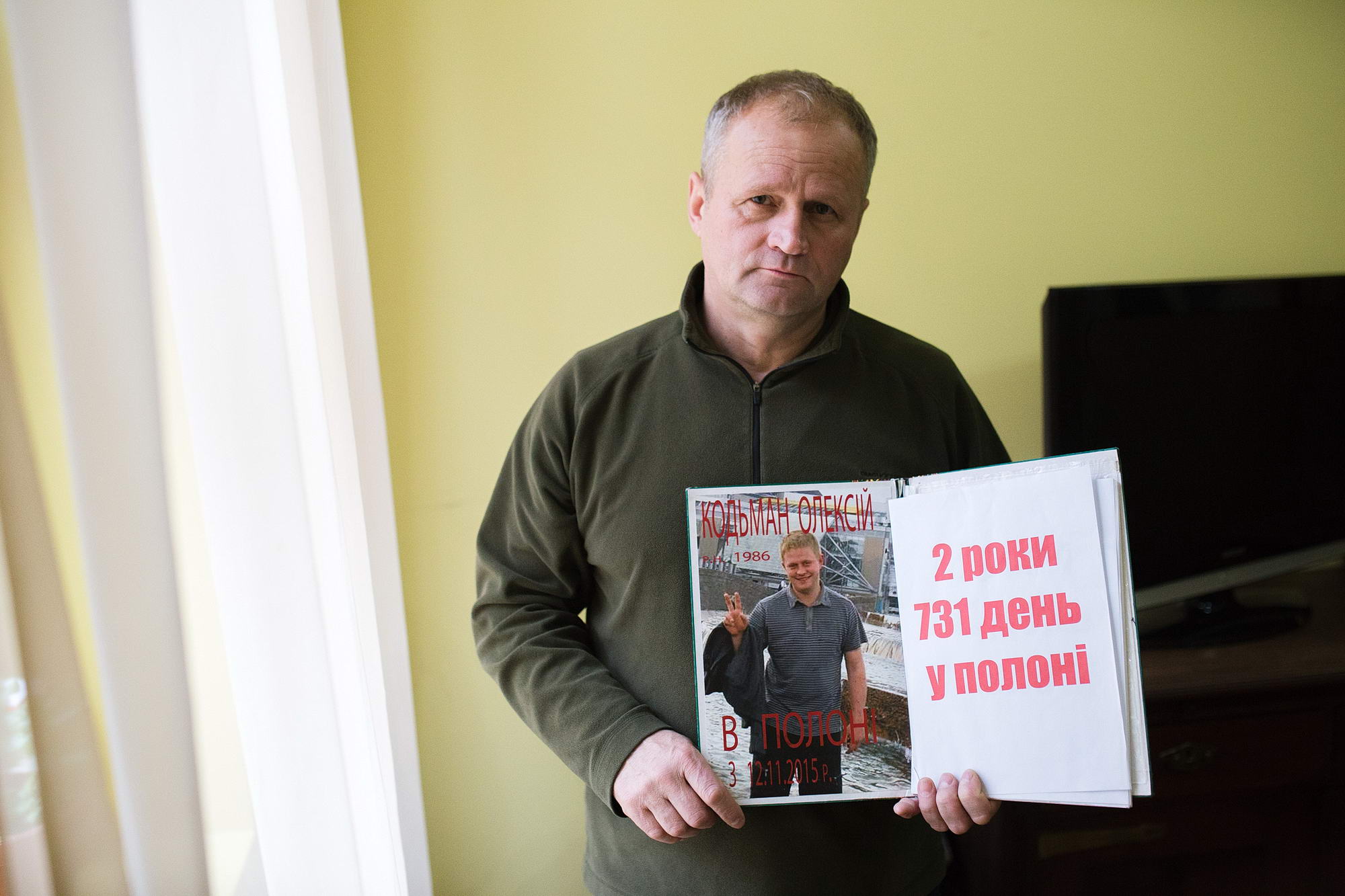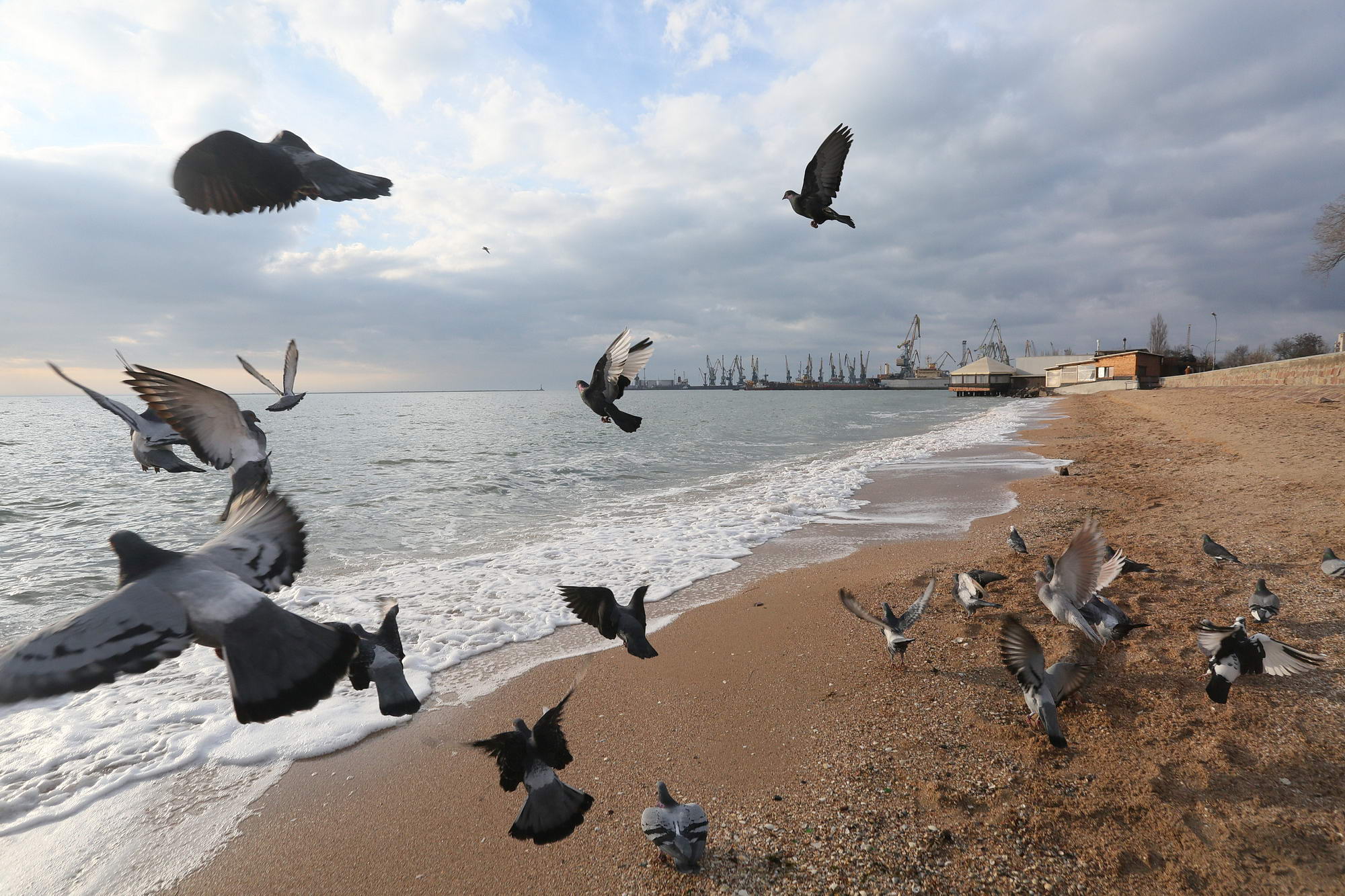TERNOPIL and BERDYANSK, Ukraine — Serhiy Kodman doesn’t need a calendar to tell how many days his son has spent in prison in the Russian-occupied part of Ukraine’s eastern Donbas.
The father displays a thick folder stuffed with protest banners which he carried during rallies in his home city of Ternopil, as well as the rallies he’s traveled to in Lviv and Kyiv. Most have just one number written on them — the number of days his son, Oleksiy Kodman, has spent in a prison in the Russian-occupied part of Donetsk Oblast.
He silently goes through the banners. He calls it his “visual diary.”
It’s been more than two years, or 750 days, since the Russian-backed forces took Oleksiy captive. He’s among 168 Ukrainians — soldiers, local citizens, journalists and volunteers — on the government’s official list of “hostages” — they are not even called what they are, prisoners of war — in eastern Ukraine.

Oleksiy Kodman (L) of Ternopil and a soldier of the 56th Brigade has been imprisoned with fellow soldier Mykola Iovov near Pavlopil in the Russian-occupied part of Donetsk Oblast for more than two years. (Courtesy)
Kodman’s family had been losing hope of seeing Oleksiy come home anytime soon: There have been no prisoner exchanges between Kyiv and the Russian-occupied areas for more than a year.
But recently their optimism has returned, after the Kremlin said Russian President Vladimir Putin on Nov. 15 phoned Oleksandr Zakharchenko, the Russian-backed leader of the occupied part of Donetsk Oblast, and Ihor Plotnitsky, who until recently commanded the Kremlin-backed forces in Luhansk, to say he favored a prisoner swap with Kyiv.
The news
Nina Kodman, Oleksiy’s younger sister, still remembers the day she got a cryptic message from a stranger on the Russian social network VK, popular in Ukraine.
“Someone says ‘Hi’ to you,” said the message, sent on Nov. 12, 2015.
The account that sent it belonged to a young man from Russia whom she had never met.
“I blocked him, but started worrying,” the woman explains. At the time, the family hadn’t heard from their elder son, a soldier working the front lines near the Azov Sea port city of Mariupol, for a couple of days.
When another “Hi” message came the next day, she started contacting the enlistment office and volunteers to inquire about her brother. The enlistment office could not say what happened to him.
But volunteers helping the army told Kodman’s family that her brother and two other soldiers had been taken captive near Pavlopil in Donetsk Oblast.
Days later she received a video titled “Hello from Donetsk” in which her brother and the other two soldiers are seen on Lenin Square in the center of Russian-occupied Donetsk.

Alyona Iovova shows a picture of her brother Mykola, taken captive with fellow soldier Oleksiy Kodman near Pavlopil in Donetsk Oblast in November 2015. (Oleg Petrasiuk)
In the video, they look exhausted and bruised, but say they are fine and the war needs to end.
“Nobody wants to keep fighting, I think it’s time to stop all that… The war. We shouldn’t fight anymore,” Oleksiy Kodman says in the video.
Taken hostage
The same day that Nina Kodman learned her brother had been taken prisoner, a different sister got the same news 1,000 kilometers to the southeast.
Map
Scroll to zoom in and out and press on an icon to see the location for Oleksiy Kodman and Mykola Iovov. Map by Yuliana Romanyshyn
In the port city of Berdyansk on Azov Sea, Alyona Iovova got an unexpected call from her brother’s partner. She was surprised: they didn’t communicate much. Her message was blunt: “Mykola has been taken hostage.” Although she didn’t know it yet, he was one of the soldiers taken captive with Nina Kodman’s brother.
Iovova immediately started contacting journalists, activists, and filed a report with the local police and later the State Security Service, or SBU.
“We had to collect all the information ourselves, because at the very beginning the SBU didn’t even know where the (captured) guys were,” Iovova explains, clutching a phone in her hands. “We didn’t want to keep silent, so we were knocking on all the doors.”
Sometime later, a stranger sent her a message asking for a dialog between the Russian-led forces and the SBU about an exchange of three Ukrainian prisoners, including Oleksiy Kodman and Mykola Iovov, for a 29-year-old Oleksandra Andriyenko, who allegedly spied on Ukrainian soldiers for Russian-led forces and was detained by Ukrainian authorities in 2015.
Iovova said she showed the message to the local SBU officers. That didn’t go well: She said that the officers shouted at her for being in touch with the separatists.
No exchange happened. Ukrainian authorities released Andriyenko in December 2016, but both Kodman and Ionov are still in the separatists’ prison.
The Kodman family also said that it was “incredibly difficult” to get any help, let alone find out about the whereabouts of their relatives from officials.
Called up
Oleksiy Kodman, 31 and Mykola Iovov, 29, would never have met if not for the war.
Kodman was a firefighter in the western city of Ternopil, 420 kilometers west of Kyiv, and Iovov was a construction worker in Berdyansk, 719 kilometers southeast of Kyiv on the Azov Sea. Ternopil, the provincial capital, has almost twice as many residents — 216,000 — as Berdyansk. Kodman was called up in the spring of 2015.
His sister recalls that their mother cried when Kodman went to the enlistment office, but he told her he “had to defend his land.” He was assigned to the 56th Brigade after completing training in Kharkiv.
Iovov volunteered for the army the same year. He thought that if he volunteered, his 24-year-old younger brother, who has a congenital disorder, wouldn’t be drafted. It didn’t go that way. The army took both brothers.
“They took Mykola and then they also drafted Sasha,” Iovova explains. “But Sasha made it back after a year-and-a-half of service, while Mykola is still there.”
During the months between the beginning of their service and their capture, Kodman and Iovov had only one 10-day leave to see their families.
Kodman’s family said he was a “different person” when he came home for leave.
“He never talked about his service. We wanted to go to the park together, have a barbeque, but he didn’t want to leave his room most of the time,” says Kodman’s sister.
Iovova, on the other hand, says that her brother was as cheerful as always. Iovov turns 30 years on Dec. 17.
“It’s his second birthday in captivity,” his sister said. “I just hope he celebrates the next one at home.”
Letters and parcels
Nina Kodman first heard from her brother a month after his capture.
“It was like receiving a call from another planet. He was brief, spoke of his health and what they need,” she said.
The last time Kodman’s family heard his voice was in June 2016. Later the captives were transferred from Donetsk to the detention center in the nearby town of Makiyivka. No phone calls are allowed from there.
For Kodmans and other Ukrainian families, mail is the only way to communicate with their imprisoned relatives.
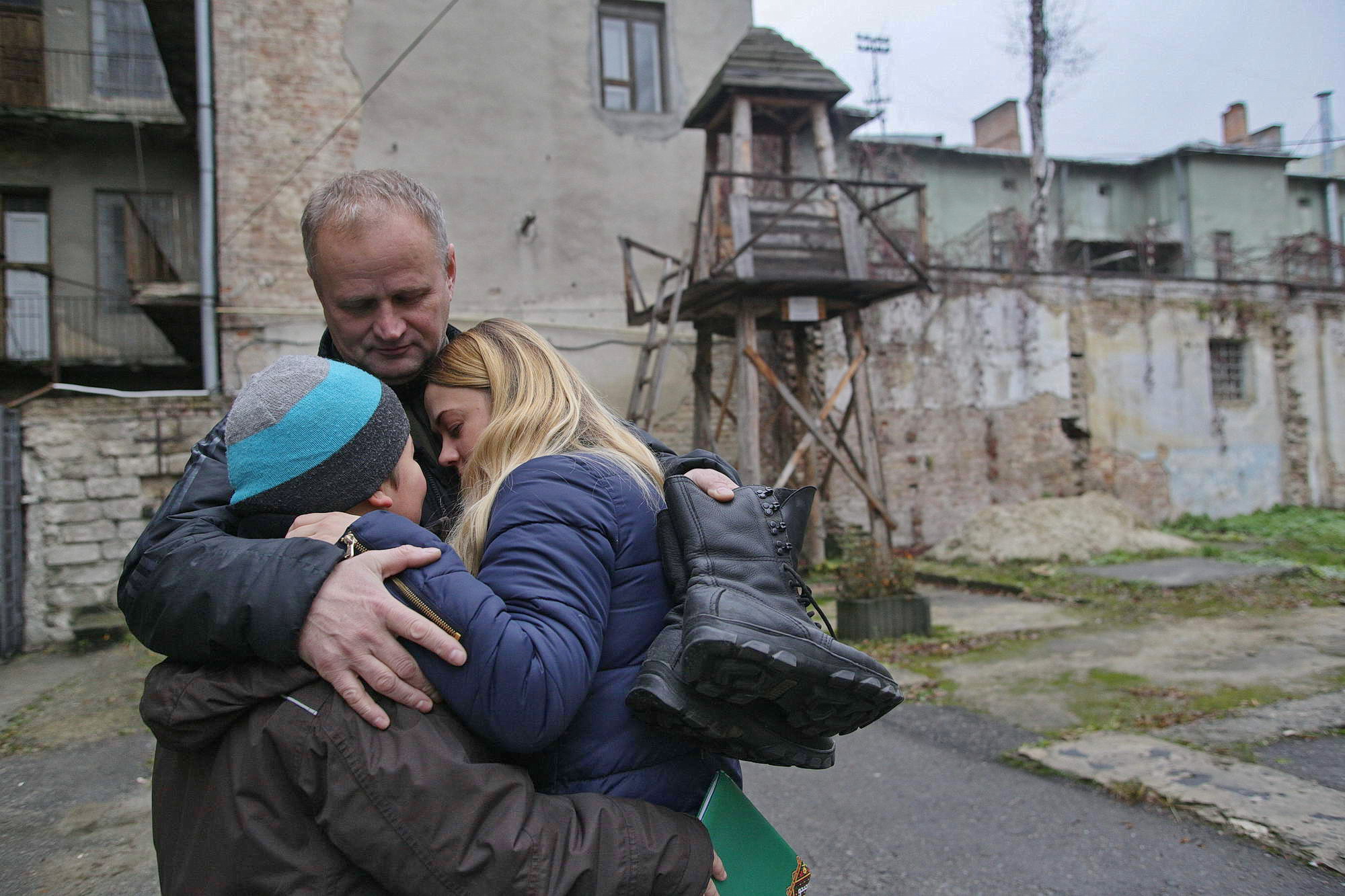
Serhiy Kodman (C) hugs his daughter and grandson in Ternopil on Nov. 29. He also carries boots that belong to his son Oleksiy, a soldier of the 56th Brigade, who has been imprisoned in the Russian-occupied part of Donetsk Oblast for more than two years. (Rostyslav Kovalchuk)
Regular Ukrainian mail doesn’t do deliveries to the occupied territories, so the families rely on volunteer groups and international organizations like the Red Cross to deliver letters and parcels to their relatives in Donbas prisons. This service is irregular: Both Kodman and Iovov’s families said sometimes delivery took months and some parcels were lost.
Miladin Bogetic, a spokesperson of the International Committee of the Red Cross, said that five times this year they have transferred parcels to both government- and non-government-controlled areas.
“We receive parcels from families, transport them over the contact line, and hand the parcels over to the prison authorities, who verify the contents and give them to the respective detainees,” Bogetic said in a written response to the Kyiv Post.
Kodman has gotten barely a dozen letters from her brother over the two years. The family knows them by heart. In them, Oleksiy usually asks about the family and describes his daily routine.
Kodman’s father hopes that parliament will do more to help Ukrainian prisoners of war.
“They don’t have any protection from the state,” he says. “Moreover, they’re considered hostages, not prisoners of war, because our government still calls it an ‘anti-terrorist operation,’ so most international laws do not apply.”
Kodman’s family hopes to see their son before the New Year.
“If not, we will be there, near the Verkhovna Rada, demanding our rights,” the father says.
Iovova says she won’t believe any promises until she knows where to pick up her brother.
“It’s been hard,” she said.
Status of prisoners of war in Russia’s war against Ukraine:
Sept. 12, 2014 — Ukraine exchanged 37 captives for the same number of Russian-led fighters
Dec. 26, 2014 — Ukraine exchanged 222 Russian-led fighters for 150 Ukrainian soldiers and civilians
Feb. 21, 2015 — Russian-led fighters exchanged 140 Ukrainian captives for 52 Russian-led fighters held by Ukraine
Aug. 27, 2015 — Ukraine exchanged 12 captives one-for-one with Russian-led fighters
Oct. 29, 2015 — Ukraine exchanged 11 Russian-led fighters for nine captive Ukrainians
December 2016 — President Petro Poroshenko pardoned 15 Russian-led fighters imprisoned in Ukraine
December 2017 — Ukraine and Russian-led forces have been negotiating to exchange 306 captive Russian-led fighters for 74 Ukrainian soldiers before the end of the year
How many prisoners of war are there? There are at least 386 Russian-led fighters in prison on Ukrainian territory, and 168 Ukrainians being captive in the Russian-occupied parts of the Donbas.
At least 3,140 Ukrainians have been found and released from the Russian-occupied parts of Donetsk and Luhansk oblasts in the last three years, according to Yuriy Tandit, an advisor to the head of Ukraine’s SBU security service.
